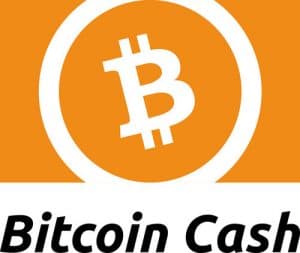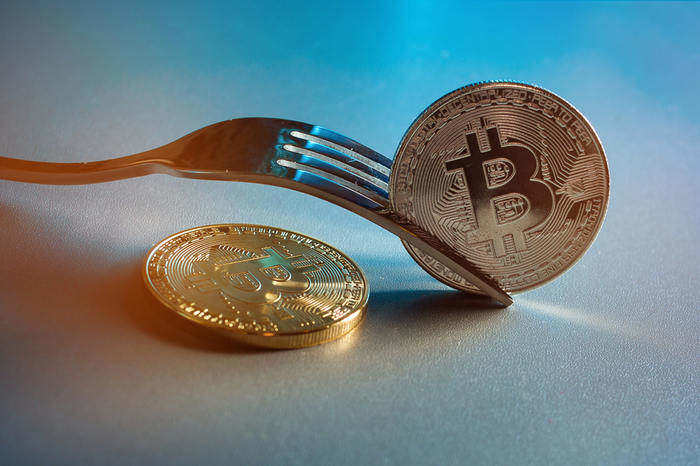If you’re new to cryptocurrency, your first move (after some initial research) will probably be to buy Bitcoin (BTC). However, when you arrive on the exchange, you’ll likely be confronted with two versions of Bitcoin: the one you expected to find, and an alternative called Bitcoin Cash (BCH). This is the case with Coinmama, as we sell both BTC and BCH. This situation can be really confusing for a newcomer, so you’re probably wondering: should you buy Bitcoin (BTC) or buy Bitcoin Cash (BCH), and what exactly is the difference?

The simplest way to answer this question is that Bitcoin (BTC) is the real and original Bitcoin; that thing your friends, colleagues, and the media are always talking about. BTC is the pioneering cryptocurrency created by Satoshi Nakomoto back in 2009. BTC has the highest market value, the largest community, and the strongest economy. If your intention is to buy Bitcoin, BTC is without question what you should choose.

Bitcoin Cash (BCH), sometimes called “Bcash” for brevity, is an offshoot of Bitcoin which came into existence in mid-2017. BCH forked off from BTC, meaning that anyone who owned BTC at the time was granted an equivalent amount of BCH for free.
BCH shares many features of BTC, including much of its codebase, but also has several distinct features which make it incompatible with Bitcoin. The major distinguishing feature is that BCH has a larger block size than BTC. This means that BCH blocks can contain a higher volume of transactions, at the cost of slower network propagation times. Should you buy Bitcoin Cash? There’s no reason not to! While BTC is the one you want if you’re looking for “Bitcoin,” buy Bitcoin Cash—or at least consider it—if you’re looking to invest in an altcoin.
The Origins of Bitcoin Cash
Block size formed the crux of a long-running and increasingly acrimonious issue in the Bitcoin community, which eventually led to BCH forking off as a separate project.
When Bitcoin was first released, it had no block size limit. A 1 megabyte limit was imposed in late 2010 to prevent people from spamming the blockchain by using it for free data storage. A limit on the number of transactions that could fit into each block introduced fee-based competition for inclusion in a block, making spam prohibitively expensive.
As Bitcoin scaled through the years, and more and more users were looking to buy BTC, that meant ever fiercer competition for block space, and fees rose accordingly. As Bitcoin fees are flat, meaning it costs the same to send $1million as $1, users making low-value transactions found fees becoming an ever larger percentage of their total transaction value. Certain Bitcoin users were thus priced out.
The fee situation came to a head in 2017. As Bitcoin price rallied to a new all-time high and it seemed that everyone in the world wanted to get buy BTC, this led to intense fee competition, and users paying low or regular fees had to wait days or even weeks for their transactions to be confirmed.
Many altcoins besides BCH presented themselves as the solution to Bitcoin’s delayed and expensive transactions. These altcoins took the obvious step of increasing their blocksize limit, thus enabling the processing of more transactions per block and so easing fee pressures. Many wondered why Bitcoin refused to follow suit, as the fee situation was causing disruption and uncertainty for many users.
The fact is that the Bitcoin developers and community had reached consensus around an entirely different approach to scaling. Instead of increasing blocksize, they would instead decrease the size of transactions! That way, more transactions could fit into a block, for an effective blocksize increase without any hardfork (read: backwards-incompatible code change) required.
This elegant solution, known as Segregated Witness or SegWit for short, would prevent full nodes getting priced out of the network, as users running nodes wouldn’t need to upgrade their hardware or internet connections to propagate bigger, more resource-intensive blocks. The Bitcoin network’s decentralization would thus be preserved.
As an added bonus, SegWit also made it far easier to implement the Lightning Network (and other improvements), thus enabling cheap and rapid low-value transactions, greater privacy, and other benefits which are still in the future.
However, SegWit was also new, complex, and a bit scary. Many miners were against it; the dominant miner and ASIC manufacturer at the time, Bitmain, hated it for economic reasons related to their formerly-secret mining advantage. SegWit would also take time to roll out to users, and in the meantime, low-value transactions were unaffordable.
Thus Bitcoin Cash was launched around the same time as the SegWit upgrade, as an immediate and direct solution to the block size problem. There was no need to wait for unproven code changes and the biggest miner was backing them up! While most users continued to buy BTC, many jumped to BCH, frustrated with what they perceived as Bitcoin’s inability to scale effectively. Indeed, the Bitcoin community had to come together to force through SegWit adoption against the wishes of most miners, thus breaking the multiyear scaling deadlock.
Bitcoin and Bitcoin Cash represent different approaches to solving the same scaling problem. Time will tell which approach ultimately succeeds… As the crypto market appears to be in another bullish phase, it’s likely that transaction volume will continue to rise, offering a good practical “scaling test.”
Practical Differences
Ideological differences aside, here are the differences which will probably have the most impact for average users. One of the main selling points of BCH is that it generally offers lower transaction fees than BTC. This means that it’s usually cheaper to send BCH than BTC, at least when sending a standard transaction via the blockchain of either coin. For this reason, anyone who sends a lot of low-value transactions with a time constraint may find it preferable to buy BCH (or any other major altcoin) instead of Bitcoin.
However, BCH lacks BTC’s Lightning Network; a secondary layer atop Bitcoin’s blockchain which allows for instant transactions (and even cryptocurrency swaps) with near-zero fees. Lightning looks set to become the industry standard for transaction speed and economy. That said, Lightning is still a fairly new feature in Bitcoin and (while it’s growing rapidly) isn’t yet widely supported by exchanges or merchants.
It must also be said that BCH is harder to spend, as it enjoys far less adoption than Bitcoin. While most major exchanges and several payment services support BCH, there are way fewer BCH options when it comes to buying goods or services. Bitcoin has the advantage of time, having had seven or so years more to build up its user base and economy.
Security Differences
Another important difference between Bitcoin and BCH is the relative security of their blockchains. While both coins use the same algorithm (SHA-256) for mining, meaning that the same ASIC mining hardware can be dedicated to either coin, Bitcoin has substantially more mining power dedicated towards its chain. The Crypto51 site estimates that the hourly costs to 51% attack Bitcoin is slightly over $1 million, whereas the cost for BCH is only $32,457.
In other words, Bitcoin is a lot more secure (perhaps 50 times or more?) against network attacks than BCH. This means that Bitcoin is a more secure store of value than BCH, as it’s backed and protected by vastly more mining equipment and electrical energy.
While BCH’s hashrate is obviously much less than Bitcoin’s, it is nevertheless much greater than the vast majority of altcoins. This suggests that BCH’s position around 4th or 5th place in the cryptocurrency market cap rankings is justified by the security of its network. That Bitcoin mining power could be easily switched over to BCH to either support or attack it perhaps serves as a caution to both coins against reckless actions.
Price Differences
Obviously, Bitcoin and BCH are priced very differently. One rule of thumb is that BCH is usually around 5% of the price of Bitcoin. At the time of writing, BCH is around 4% of Bitcoin’s price, while being roughly 2.8% of its hashrate.
Interestingly, Bitcoin SV, which is in turn a fork of Bitcoin Cash, has about half of BCH’s hashrate and often trades for about half its price.
While there are no major technical or economic developments in the pipeline which suggest that Bitcoin Cash might “flip” Bitcoin by gaining a higher price, this is always a remote possibility in the event that Bitcoin experiences a catastrophic failure.
Community Differences
A fair amount of animosity remains between the BTC and BCH communities. As an outsider, it might be hard to understand this conflict. After all, both communities share many principles. As with religious schisms however, the small differences tend to outweigh the commonalities. That said, in 2018 Bitcoin and Bitcoin Cash developers alerted each other to some serious vulnerabilities in each other’s projects, showing that perhaps crypto is big enough for both coins after all.
BTC or BCH?
At the end of the day, the decision to buy Bitcoin (BTC) or Bitcoin Cash (BCH) is one only you can make. If you’re new to crypto and want to buy the original, BTC is the way to go. If you want to branch out, try buying BCH. One important thing to remember is that BTC and BCH have different blockchains, and therefore will require different wallet addresses. Although their wallet addresses often look identical and are therefore easy to confuse, it’s very important that when you buy BTC you send it to your BTC address, and that when you buy BCH that you send it to your BCH wallet address, otherwise the coins will get lost.



